Picture a warehouse that doesn’t require any physical space or rent, never runs out of stock but never has overstock, and enables you to deliver parts on-demand in hours. Digital warehouses and 3D printing turn this utopian vision into reality.
Instead of physical storage buildings, digital warehouses are cloud-based repositories of the electronic files you need to 3D print parts anywhere, anytime. From automotive spare parts to polymer eyeglass frames to tools and appliance accessories, digital warehouses save money, space, time, and the environment. This solution gives manufacturers a new way to improve their bottom line and optimize their supply chains.
Let’s look at the basics of digital warehouses and the advantages they provide. We’ll also take a look at some companies already blazing this trail and explain how you can set up your own digital warehouse with software or a service.
What Is a Digital Warehouse?
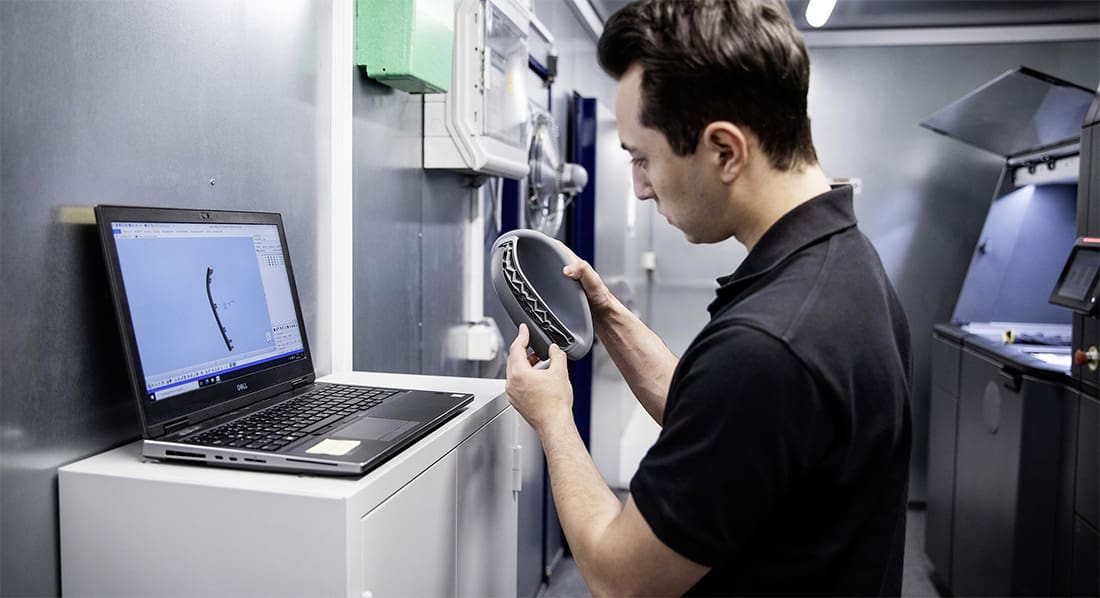
Digital warehouses often get confused with digitalized warehouses. The latter are conventional, physical warehouses that use IoT and Industry 4.0 technologies, often combined with robotics, to streamline inventory management of physical parts and products.
Digital warehouses (sometimes called virtual warehouses), however, exist only in the cloud. They are fully digital repositories that store electronic files, 3D models, and any other type of blueprint necessary to 3D print parts or products as you need them and where you need them by sending the digital model file to a 3D printer at your facility or a local on-demand service.
At its most basic, a digital warehouse can be a simple online storage platform along the lines of, say, Google Drive or Dropbox, but in practice, they are much more than that. More sophisticated solutions include advanced features, such as search fields, tagging and filtering functionality, data links to local 3D printing service providers, and, of course, security.
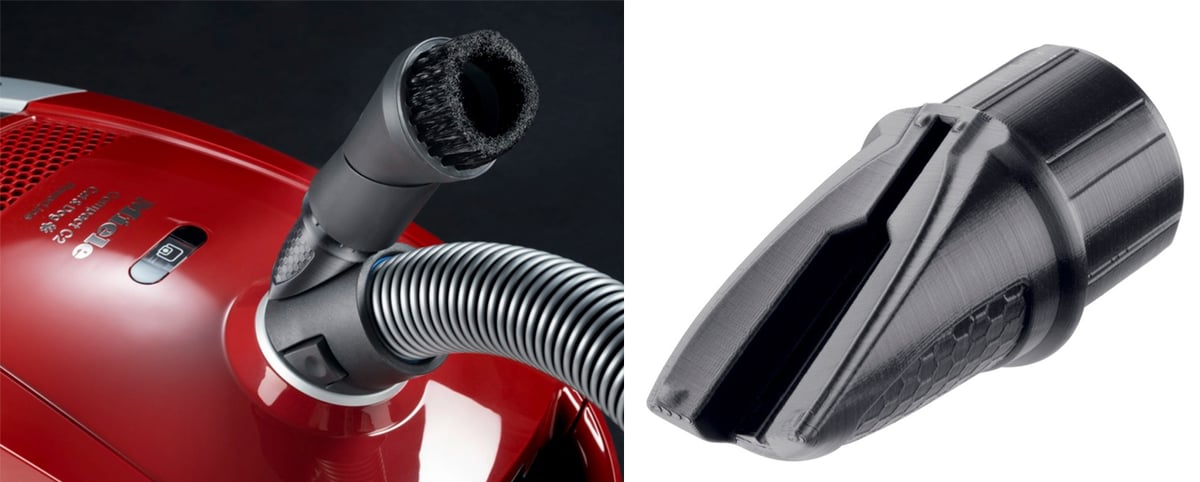
One example comes from home appliance manufacturer Miele, which started using digital inventory service provider Replique’s digital warehouse in 2021. This project, called 3D4U, lets Miele customers order accessories and spare parts that get 3D printed at a printing service closest to them. As a result, Miele says they have expanded their product portfolio and offered better, faster service to their customers.
Are Your Spare Parts 3D Printable?
Anything that can be 3D printed can be housed in a digital warehouse. But how do you know which parts of your inventory can be 3D printed? Some of the solution providers, such as 3YourMind, Castor, and Spare Parts 3D, can comb through your existing inventory and point out the parts that can be 3D printed to the same or better quality than your parts made with traditional manufacturing and the parts that can’t. In this analysis step, you may find parts and components that could be improved with 3D printing.
In order to store spare parts in a digital warehouse, they must first be digital files. If your part or product was designed using computer-aided design (CAD) software, then the digital file is already available. If no original digital file exists, such as for older spare parts, you (or a service) can use 3D scanners to create accurate 3D models of physical parts.
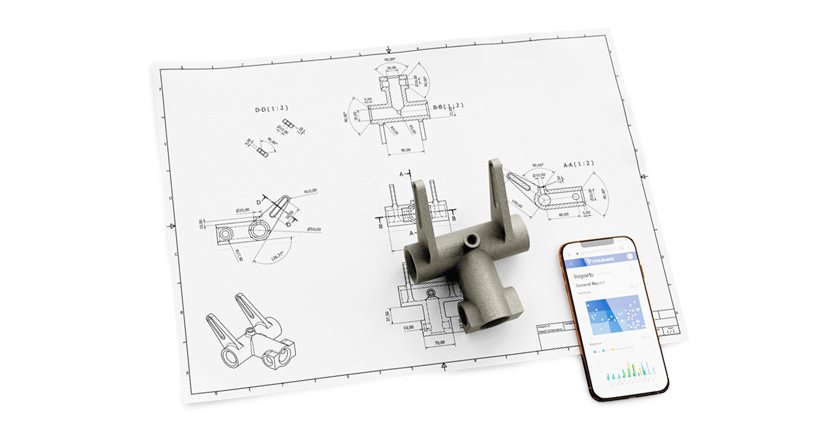
The Advantages of Digital Warehouses
Digital warehouse technology delivers incredible high-value benefits to manufacturers. They make it possible to:
- Reduce Costs
- Build Faster Supply Chains
- Enable Low-Volume Production
- Reduce or Eliminate Standing Inventory
- Decentralize Manufacturing
- Reduce Risk of Obsolescence
- Reduce the Carbon Footprint
Let’s take a closer look at each of these advantages and how they’ve been implemented.
Reduce Costs
Most advantages of digital warehouses ultimately lead to saving money. Eliminating physical assets is the main avenue for cost reductions with digital warehouses. As the CAD file repository is digital, there’s no need to pay rent and maintenance costs on extensive storage facilities. Although it’s probably a good idea to always maintain a small standing stock, the ability to produce spare parts on-demand also cuts down on running inventory management costs.
Additionally, digital warehouses and additive manufacturing reduce operational costs by simplifying supply chains and lowering manufacturing costs. Traditional tooling is expensive and generally requires ordering large numbers of parts. 3D printing, on the other hand, enables manufacturers to produce parts when they need them, either in-house, at the nearest printing service, or at a printing service closest to the point of need.
Oil company Shell announced its digital warehouse strategy in 2021. Although it has 3D printing capability, the plan is to develop a digital warehouse that stocks all the information required to print components whenever they are needed in partnership with local 3D printing services. “A digital warehouse enabled by local eco-systems would present true lead time reduction, responsible use of resources, and progress for the local communities where Shell operates,” the company said in a statement. “At manufacturing sites, access to 3D printing services reduces the need to stockpile components. Teams merely need to print the replacements needed, saving both time and money.”
To date, Shell has installed more than 50 3D printed spare parts in its assets, both produced in-house as well as sourced from 0n-demand manufacturers. Shell also is testing its digital warehouse plan at a refinery in the Netherlands, where it is 3D printing impellers for a production-critical, 7-stage centrifugal pump. If this pilot program is successful, it would mean the refinery could supply 3D printed pump impellers “just in time” instead of stocking the spare parts for years.
Build Faster Supply Chains
Manufacturing depends on complex and long supply chains to deliver parts and components. As a result, lead times for spare parts in demanding industries, like aerospace, can be extremely long — as long as 20 months. As a result, when critical components break, machines and factories may stand idle for extended periods.
Digital warehouses can resolve this problem. 3D printing is much faster than traditional manufacturing because it doesn’t require tools, dies, or molds. Additionally, CAD files stored in a digital inventory can be sent around the world in the blink of an eye and produced at any location with a suitable 3D printer — even in-house. As a result, it’s possible to shorten or eliminate delivery times and costs, which is also a great environmental benefit.
For example, 3D printer maker Ultimaker developed a digital warehouse solution with German packaging machine producer Gerhard Schubert. Schubert’s major clients, such as Nestle and Unilever, depend on the company for spare parts for packaging machines, but these traditionally had long lead times. Thanks to the digital warehouse, these clients can now browse Schubert’s digitalized spare part inventory and print the components in-house or nearby when they need them.
“This is a huge benefit to Schubert’s clients,” according to Ultimaker, “drastically decreasing lead times for new parts – and eliminating the need for extra space that would otherwise be needed to store a repository of spare parts.”
Enable Low-Volume Production
Traditionally, machine operators and manufacturers have had to create large volumes of spare parts. This is simply due to economies of scale — the large production volume is the only way to cover the high costs of tooling. As a result, companies have been stuck with large volumes of spare parts that can sit on warehouse shelves potentially for years.
3D printing is ideally suited for low- to medium-volume production, even printing one individual spare part. The cost per part remains the same, whether you’re printing one of 100 components.
Germany’s national railway operator Deutsche Bahn faced precisely this spare part issue. They often require small, custom-made components — such as light fixtures — for their trains. However, these parts have long lifespans, so Deutsche Bahn generally needs only a few spare items at a time, but tooling costs and minimum purchase limits made this approach uneconomical.
For help, Deutsche Bahn partnered with German 3D printer maker EOS and contract 3D printer Hasenauer & Hesser to digitalize these customized components. Now, they are safely stored in a digital warehouse, and Deutsche Bahn can order spares at 24-hour lead times whenever a fixture happens to need replacement.
Reduce or Eliminate Standing Inventory
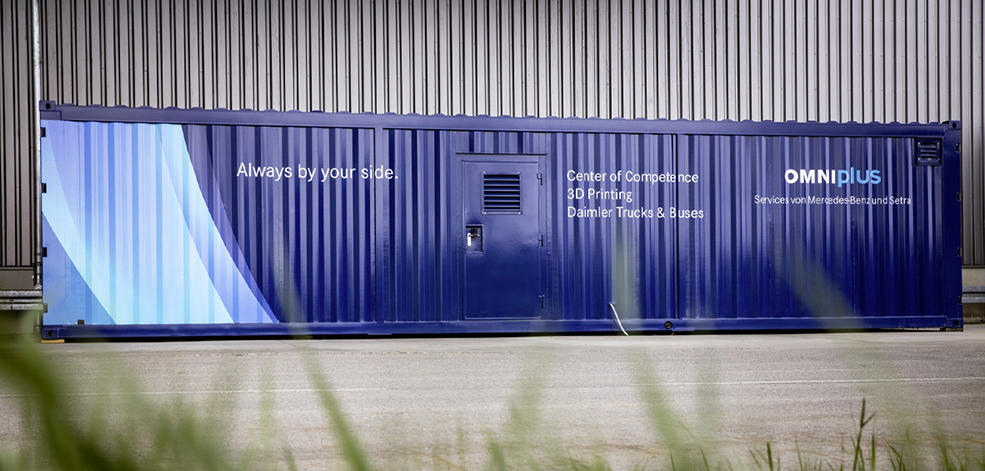
As we already mentioned, traditional manufacturing results in large numbers of spare parts, many never likely to be used. Manufacturers face the issue of where to store those parts. Warehouse space is expensive, and some parts are rarely needed, meaning hundreds of them gather dust and eat up shelf space.
Hand-in-hand with enabling low-volume production, digital warehouses can — in the best-case scenario — completely eliminate standing inventories. When the spare parts only exist as digital files, there’s simply no need for physical storage. And even if you want to keep physical parts available, just in case, you won’t need to order dozens of them at a time.
Daimler Buses realized these benefits by establishing their digital warehouse and a 3D Printing Center of Competence. The Center maintains a digital warehouse of nearly 1,300 spare components. Daimler is able to send the parts’ CAD files to clients or service partners on-demand anywhere in the world. As a result, they don’t have to keep this staggering number of components in a physical warehouse, significantly reducing storage costs and delivery times, and making very happy customers.
“Our vision is to produce our genuine parts decentrally within the shortest possible time to ensure optimal availability for our customers,” says Ralf Anderhofstadt, head of the 3D Printing Centre at Daimler Buses. But what about spare part sales? Daimler has that covered with a license management tool where customers purchase 3D printing license that defines exactly how often a part may be printed.
Daimler has become so successful with its digital warehouse it now offers it as a service to other companies. The spin-off company called Additive Manufacturing Solutions offers part screening, part optimization, and digital warehousing.
Reduce Risk of Obsolescence
“Part no longer available” are four words every manufacturer sourcing spare parts dreads to hear. Unfortunately, obsolescence is an industrial inevitability — companies eventually stop supporting old products and making new parts for them. However, this can put manufacturers and resellers in a difficult situation if they need out-of-production spares for operation-critical equipment.
However, with digital warehouses, manufacturers can significantly reduce the risk of obsolescence. They can 3D scan out-of-production parts and store them securely in their digital inventory. Consequently, they can produce brand-new parts for decades-old machinery on-demand with modern 3D printable materials, like high-durability metal alloys or engineering-grade thermoplastics. These spare parts keep their old machinery humming instead of having to be entirely scrapped.
Luxury car maker Porsche has been using this approach already for several years. Many car enthusiasts still drive and repair old, classic Porsches, but the company no longer produces spare parts them. As a result, owners faced dwindling supplies and risked their classic vehicles being forced out of action.
To resolve the issue, Porsche decided to digitize the spare parts that were most at risk of running out. Now, using SLS metal 3D printing, Porsche is able to produce, on-demand, spares that have been out of production potentially for decades. Classic car enthusiasts, meanwhile, can continue to enjoy their rides.
Reduce the Carbon Footprint of Spare Parts & Products
Just imagine the amount of energy that goes into heating, cooling, and lighting warehouses, or the amount of CO2 generated by long ocean voyages and truck shipping to get spare parts around the world. Digital warehouses eliminate large chunks of this.
Daimler calculated that by digitizing its 1,300 parts, it saved more than 40% in CO2 just due to reduced electricity and heating in warehouses. “During transport, we significantly reduce the CO₂ footprint, too,” says Anderhofstadt. “With 1,300 different parts, we have CO₂ emissions of about 300 tonnes per year by sea, land or air. In comparison, sending the data digitally results in a reduction to just a quarter tonne per year.”
Providing consumers with the parts to repair their products, rather than replace them, is the sustainability promise behind garden furniture maker Siena Garden and its digital warehouse of spare parts.
“Today, customers are demanding sustainable and repairable products,” says Peter Benthues, at Siena Garden parent company H. Gautzsch Firmengruppe. “This is also seen in recent efforts, such as the right-to-repair regulations. Siena Garden wants to go one step further here. This is the claim of the brand: more care, at a better price.”
When customers order a spare part on the Siena Garden online shop it tigers in order to 3D print it.
Concerns & Challenges
Digital warehouses can offer significant benefits, but they’re not completely concern-free solutions. To begin with, you must ensure you aren’t at risk of data loss. As with all cloud-based storage platforms, manufacturers using digital warehouses need robust backup and redundancy solutions to protect their data.
Data protection also extends to securing your files from data breaches and cybercriminals. Many spare part designs are proprietary, and manufacturers need extensive security features to prevent unauthorized access to their digital inventories. For example, to prevent someone from 3D printing and selling your spare parts or products. There’s also an element of IP protection — manufacturers must ensure that CAD files can’t leak outside their organizations.
For example, the US military has a huge digital warehouse of spare parts and components that are critical to mission readiness. Transmitting part files directly to connected 3D printers anywhere is an essential element that 3D printing offers to every military branch. Keeping those files out of the hands of the enemy is a challenge the military hopes to solve with blockchain.
The U.S. Air Force Rapid Sustainment Office is working with blockchain innovator SIMBA Chain to develop a solution that will enable the Air Force to manufacture, test, and deploy critical replacement parts for aircraft and other weaponry on forward operating locations and bases around the world using advanced 3D printing supported and secured by blockchain.
Finally, another concern with decentralized manufacturing is that it could introduce quality issues or irregularities into the final 3D printed parts since they’re not all made at the same facility. Manufacturers need a quality control process to ensure that each printing location uses the appropriate 3D printers, printer settings, and materials to produce the desired parts.
Some, but not all, of the products below address these concerns.
How to Set Up a Digital Warehouse
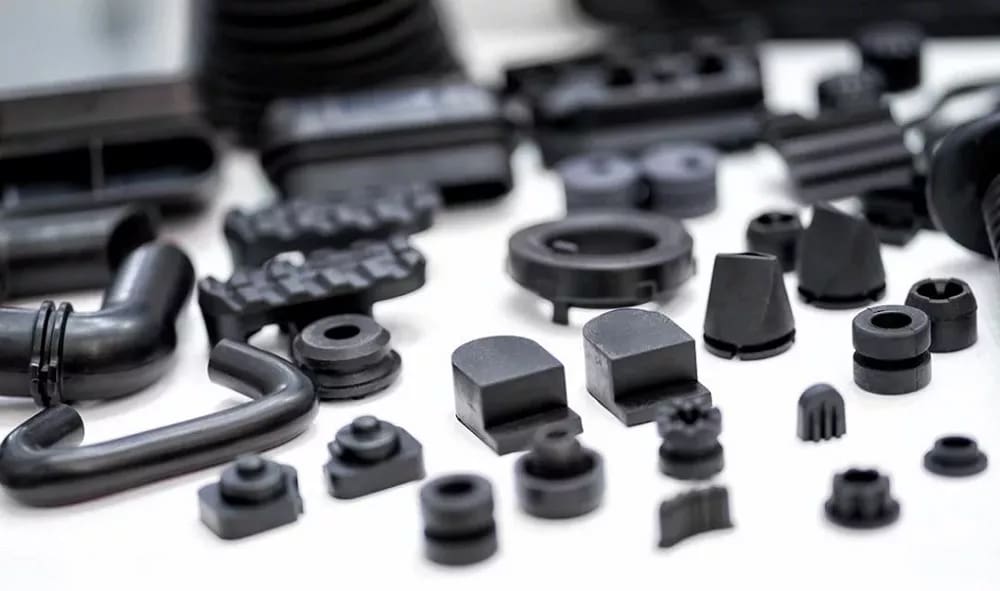
If you’re interested in digital warehouses, you might want to get one set up as soon as possible. However, moving from physical to digital inventories is a process over time. Carefully consider what you should expect from your solution or program, what challenges you might face, and what kind of solution is best suited for you. Let’s take a look at these more closely.
Traits to Look For
Each digital warehouse solution – either as a product or built in-house – has features and functionalities that impact what it can deliver for various manufacturing operations. That said, there are features that practically all potential digital warehouse operators should have.
- Ease of Use: One of the main end goals of adopting a digital warehouse is to streamline inventory management for you and potentially for your customers if they’ll be ordering from your digital warehouse directly. Ensure that your digital inventory solution provides the simplest possible installation and user interface. It should also feature functionalities that allow you to search, tag, and filter parts.
- Validation Tools: Your solution should come with tools to validate and inspect the parts uploaded to the system and certify them based on test prints. Particularly robust systems available today, also enable you to identify spare parts that are most ideal for digitization and additive manufacturing – not all of your parts will be.
- Connectivity: Pick a solution that easily connects to both internal capacities, such as your MES, and external suppliers to make delivering parts for 3D printing as fast and optimized as possible.
- Software Integration: An ideal solution connects your digital inventory to other computer programs you use, such as order management, ERP, and CRM systems.
- Security: Although digital inventories hold no physical parts, you may still lose your data in a disaster situation, hacking, or corporate espionage. Make sure your solution offers appropriate backup and cybersecurity features to safeguard your operation.
Build Your Own or Buy?
When the time comes to choose what type of digital warehouse to install, manufacturers may be tempted to go for a fully proprietary solution. After all, developing your own digital inventory system allows you to customize it exactly to your needs. It can be easier to ensure smooth functionality and compatibility when the digital warehouse is purpose-built for your operation. However, this may not always be the ideal approach.
It’s easy to overlook matters such as outside compatibility, security, or other advanced functions. At the same time, building your own system is likely to be extremely time-consuming and laborious — not to mention costly. Unless you have an in-house team of software developers, you’ll have to hire an outside developer, which can come at a high price. Plus, software is never “finished” and must be updated maintained.
For most companies, the easiest solution is to purchase or subscribe to a digital warehouse solution from a third party. We’ve listed some of the top and up-and-coming options below to get you started in researching your options. Keep in mind that this is a rapidly growing software segment and new solutions are coming to market all the time.
In addition to dedicated digital warehouse software producers, some print-on-demand service providers, such as Fast Radius, have begun expanding to offer digital inventory solutions. This makes sense since most spare parts are printed by local on-demand services. The upside with these providers is having your inventory connected to a dedicated printing company, which can further optimize your spare parts supply chain.
Digital Warehouse Software & Services
3YourMind
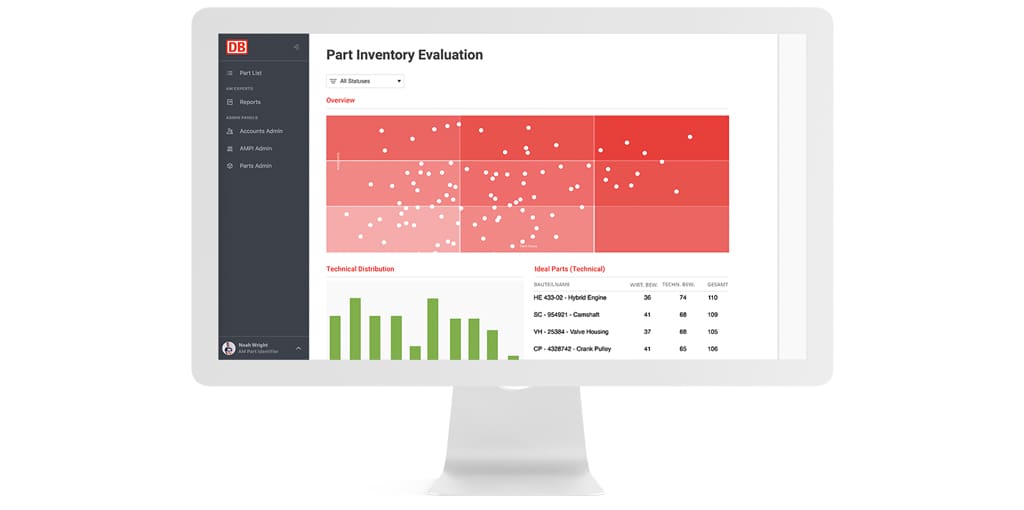
Used by military and heavy industry, among others, 3YourMind‘s Agile Manufacturing Software Suite brings the supply chain to the engineer responsible for maintaining ships, submarines, and production lines. The suite consists of three separate platforms — Agile Product Lifecycle Management (PLM), Agile Enterprise Resource Planning (ERP), and Agile Manufacturing Execution System (MES) – installed in the cloud or on-premises.
Agile PLM is 3YourMind’s digital warehouse solution. In addition to digital part inventory, it includes use case screening, inventory and printability analysis tools, print orientation optimizations, and various integrations via APIs to ensure smooth additive manufacturing value chain connectivity.
The Agile ERP connects with the PLM software to automate order intake, material comparison, and pricing, among others. The Agile EMS, meanwhile, offers digital production workflow optimization tools, like tracking, quality assurance, and data standardization. Together, 3YourMind’s software solutions provide a holistic, comprehensive manufacturing productivity suite. It’s also not married to 3D printing and may recommend other on-demand manufacturing processes depending on the part.
In late 2022, 3YourMind announced a partnership with Werk24, an AI company that can analyze 2D drawings in your existing part inventories to determine if they would meet the criteria of parts for on-demand additive manufacturing.
AMFG Additive MES
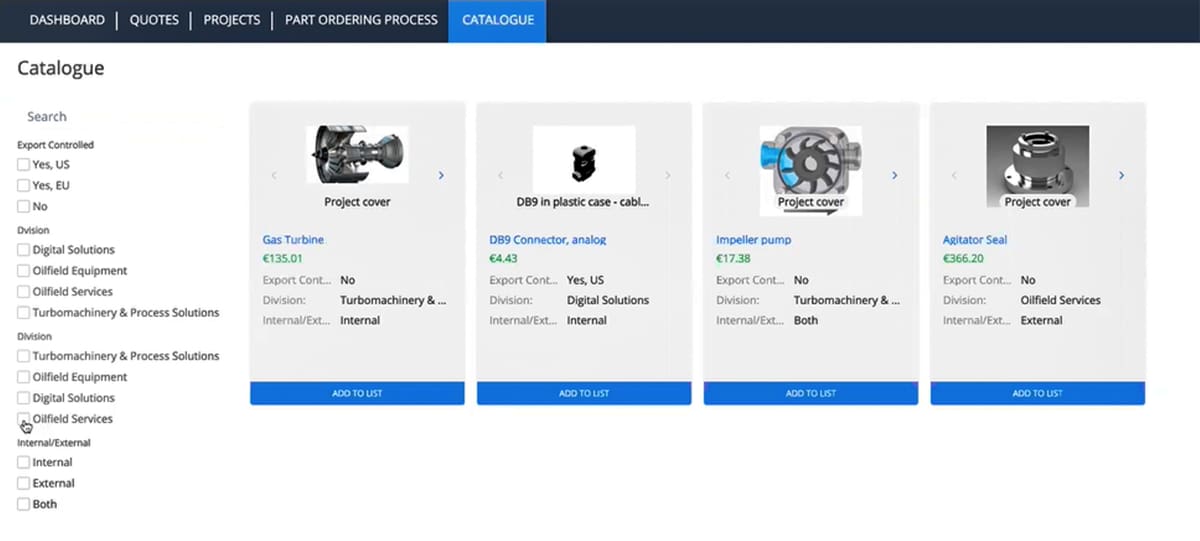
UK start-up AMFG provides MES and workflow software for additive manufacturing to customers in dozens of countries and a range of industries. One of the company’s focal points is facilitating digital inventories for spare parts. Although the software platform does much more than digital part warehousing, it’s a modular solution bundled to address the needs of companies in different sectors, such as rapid prototyping or spare parts. Its “customizable workflow automation solutions” gives you the flexibility to build a software platform to fit your need, AMFG says.
To enable distributed manufacturing of your part library, the platform’s Digital Inventory feature enables organizations to produce parts on demand at the point of need.
Another key benefit of a digital part catalog as a part of Additive MES software is the ability to make your AM operations more efficient, the company says.
Digital inventory helps streamline your AM production management by allowing you to specify what material and process should be used, as well as set 3D printer parameters for each part. In this way, a digital inventory enables your company to keep the production data in a single, validated system, ensuring that parts are produced according to their specifications each and every time. This helps you to establish a repeatable process that supports scalability.
Ultimately, a virtual inventory makes distributed production economically viable. Inventory can be shared across production centers to authorized personnel, enabling them to 3D print parts when needed and closer to the point of use.
Ivaldi
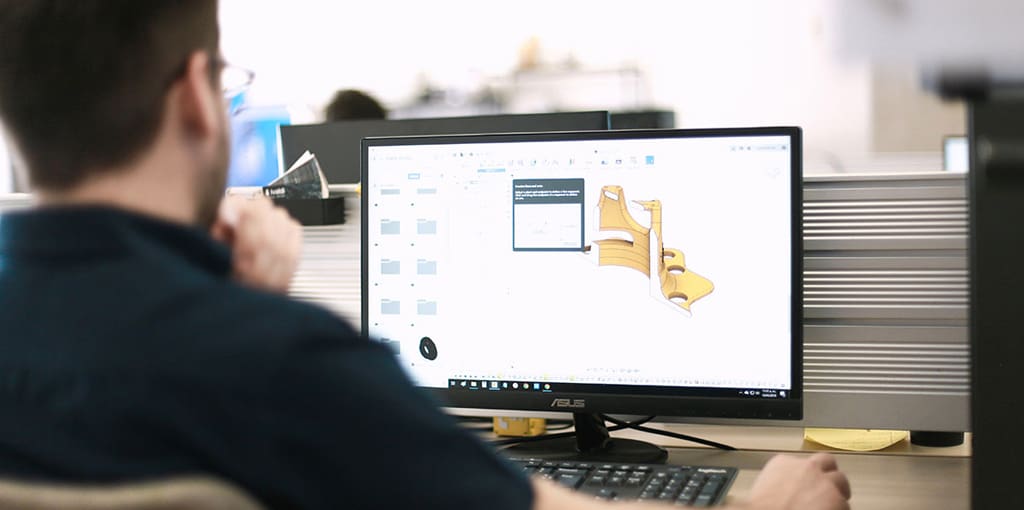
California-based Ivaldi offers a range of additive manufacturing solutions to enable manufacturers to digitize their spare parts inventories. Their digital warehouse software comes with a dedicated dashboard to allow manufacturers to easily manage their inventories.
The software allows users to access digitized parts, analyze further digitization opportunities, and order 3D prints on-demand from certified 3D printing bureaus. Ivaldi’s solutions also comes with a Material-Technology-Location comparison tool that provides users an overview of which parts they can print from specified materials within a certain time frame, based on their locations.
Ivaldi offers security and warranty features to protect their clients’ personal and company information, data flow, and file integrity. The company also offers analysis and digitization services,
Authentise Digital Design Warehouse
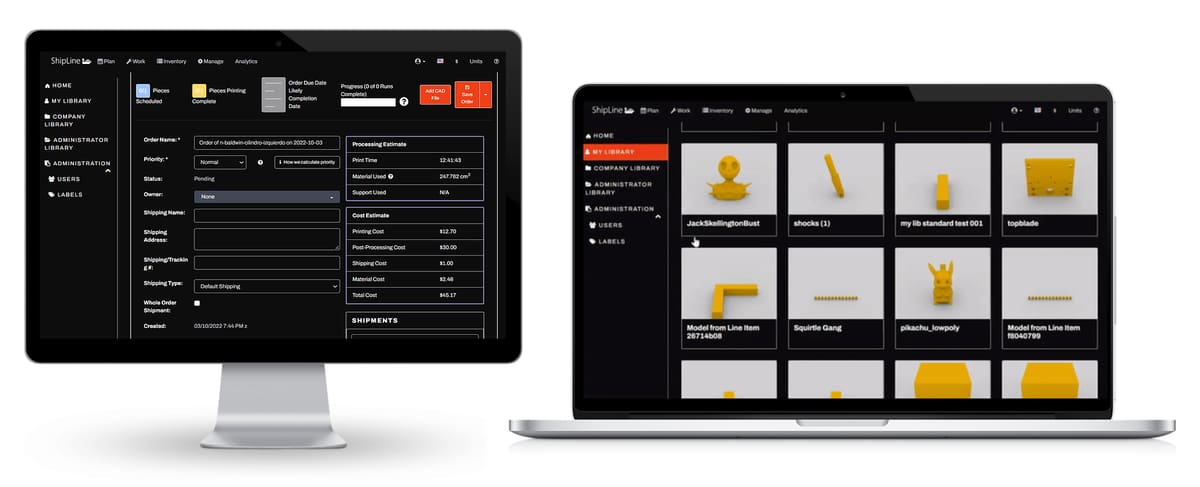
The Digital Design Warehouse from American software maker Authentise is designed to help organizations create more cohesive additive manufacturing initiatives by bringing insights from various silos into full view across all teams, the company says. The platform allows groups within organizations to have their own parts library by uploading any 2D and 3D file types with fully configurable additional parameters. These designs can be analyzed with plugins from third parties, such as Zverse, which enables the conversion from 2D to 3D, and Castor, which assesses the project’s suitability for additive manufacturing.
Sharing is at the heart of the new platform. Access is tightly controlled with granular permissions, enabling you to share projects with internal and external stakeholders, such as suppliers or customers.
For example, an OEM can use the platform to first manage the design and engineering process, bringing multiple designs, R&D, and testing stakeholders together, then the designs can be shared with potential clients via a fully custom branded catalog. The inclusion of an “Order Now” button allows for the design to be sent directly to a production center of choice.
Replique
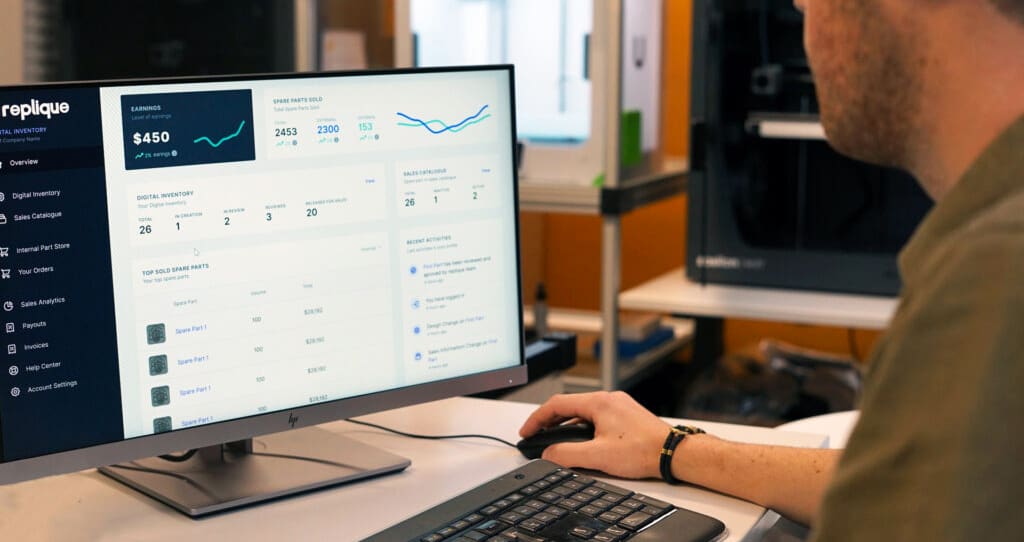
Replique was founded by BASF employees with the idea to digitize and produce spare parts on demand so that they are available anytime and anywhere. But now, it is a global software provider helping all types of companies digitize their part inventory.
Replique provides a secure digital platform that enables OEMs to provide parts on-demand to their customers through a decentralized 3D printing network. As an end-to-end solution, Replique supports its customers along the entire value chain, including design, technology, material selection, and digital warehousing.
Replique’s Digital Inventory service connects spare parts inventory to the company’s 3D printing capabilities. Replique says users can easily add CAD files to the system, and the company can also digitize physical parts. The inventory system automatically chooses the best manufacturing partner based on capabilities, production capacity, and location.
Replique’s system integrates with common ERP and e-commerce systems to offer smooth interactions with users’ other software. The solution also includes part and commercial analysis tools, and end-to-end encryption.
In late 2022, Replique introduced RSure, a quality tracking module that enables OEMs to track each of their 3D printed parts directly and ensure that final parts meet necessary quality requirements.
SpareParts3D
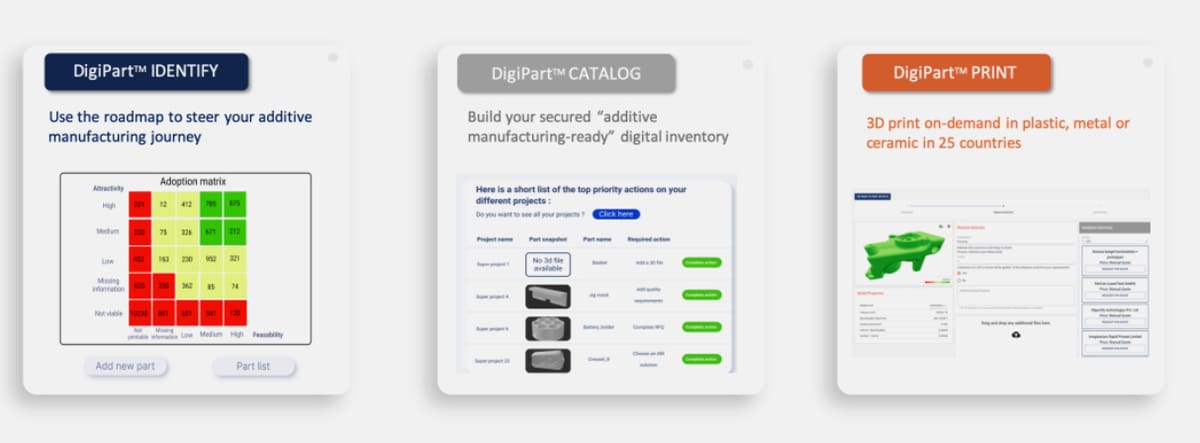
French start-up Spare Parts 3D offers a software solution called DigiPart, designed to enable you to apply additive manufacturing to your spare part inventory. The three models of the software, DigiPart Identify, DigiPart Catalog, and DigiPart Print, do just that: help you identify which parts in your inventory can be 3D printed, assemble the digital inventories, and print-on-demand at a network of service suppliers.
Spare Parts 3D also encrypts all production instructions sent to part manufacturers.
The software’s unique approach which centers on the functional analysis of your exiting inventory is key to helping you efficiently sift through your spare parts data and establish which parts are likely candidates for 3D printing, and which are not.
Fast Radius
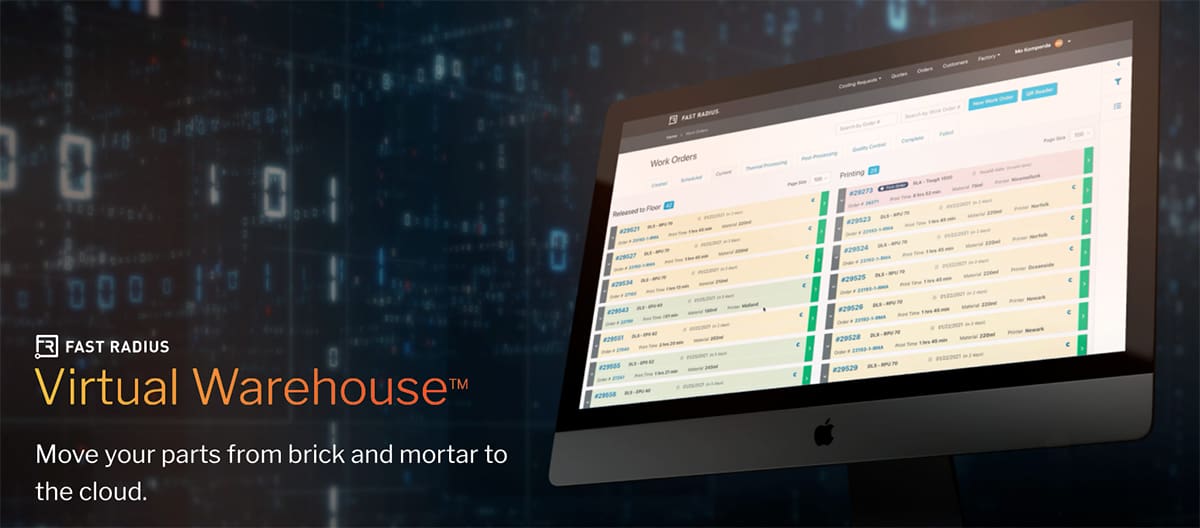
Cloud manufacturer Fast Radius has developed the Virtual Warehouse software, which connects users’ part inventories to their Cloud Manufacturing Platform. Users can then order the parts when needed, or schedule times for future part deliveries through Fast Radius’ network of microfactories.
The company offers FDM, SLA, DLS, and MJF 3D printing services. They’re also able to injection mold or CNC machine parts if necessary. Several large-profile companies, like the Airbus subsidiary Satair, and Husqvarna, are successfully using the Virtual Warehouse.
AMufacture
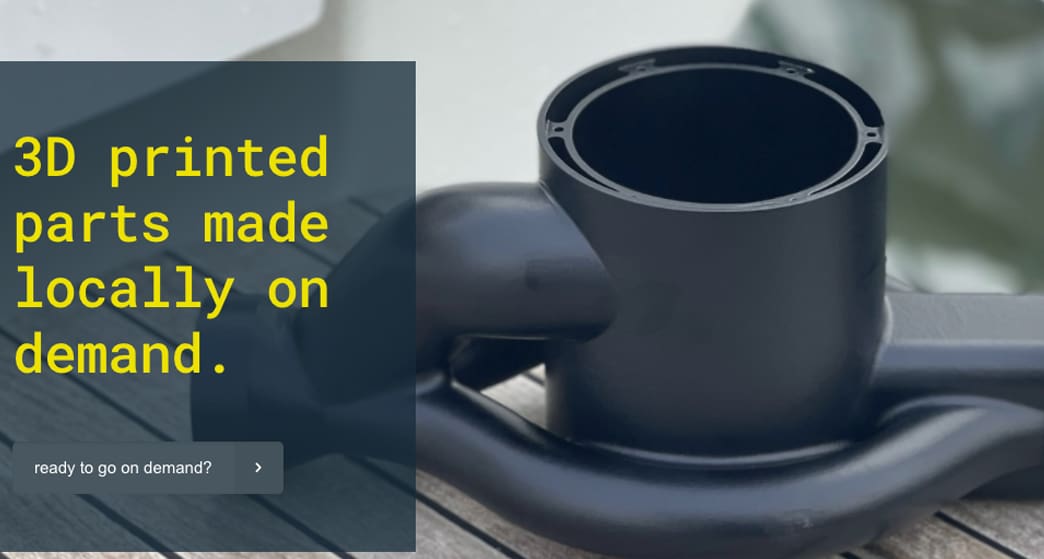
UK-based AMufacture is a 3D printing agency that also offers an integrated digital warehousing program. The company stores the files on its own servers and prints them on-demand using MJF, SLS, SLA, or FDM printers.
In addition to digital inventory and 3D printing, AMufacture offers part design services to optimize existing CAD files or to create new ones. Put together, they offer an attractive solution to get parts from the design table into the printing chamber.
Partbox
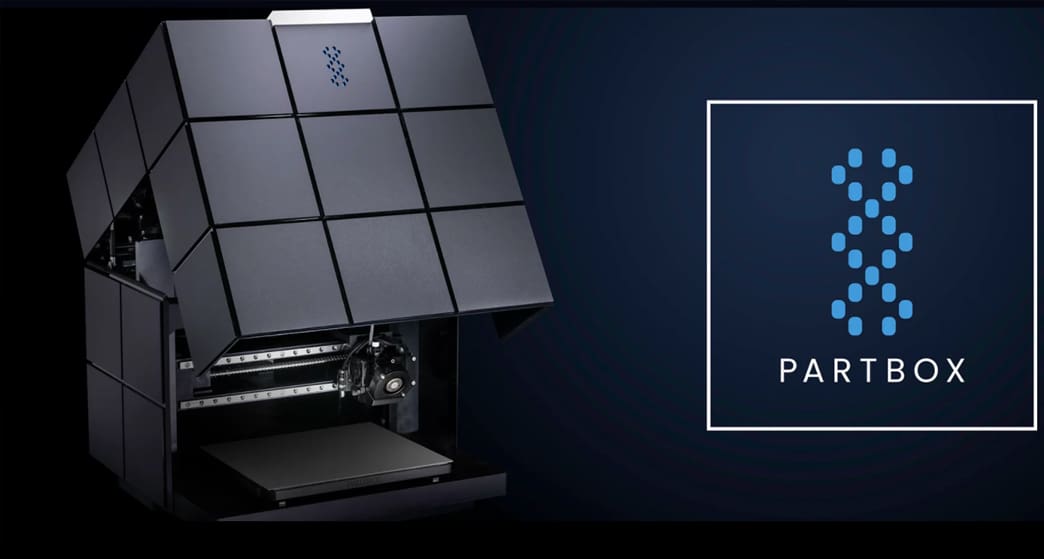
We already talked about Schubert’s digital inventory system above. The company’s Additive Solutions arm now also puts their AM expertise within the reach of other companies with their Partbox platform.
Users can start print jobs directly from the simple web-based Partbox application without waiting for approval or discussing with representatives. The solution integrates with both in-house printers and supplier networks. With extensive data security and a wide available material range, the Partbox makes printing parts from the digital warehouse extremely fast and easy.
DB Schenker
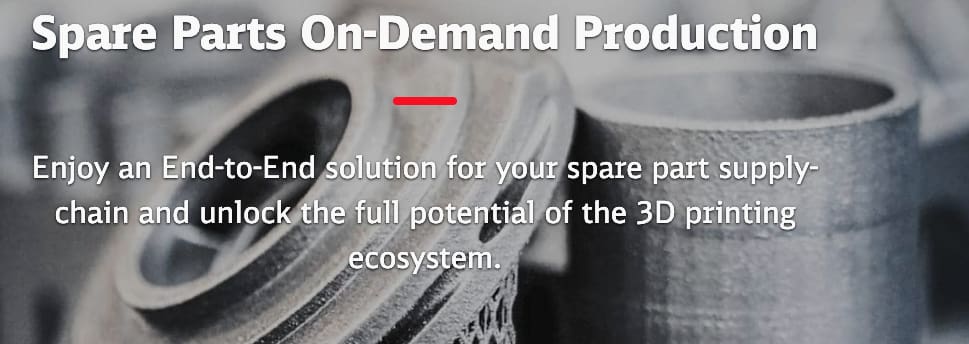
Veteran logistics company DB Schenker has also started offering digital warehouse services. They provide an end-to-end solution, from inventory analysis and part digitization to on-demand manufacturing.
The company offers local printing globally to minimize lead times, with no minimum batch sizes. They also have a free auditing service to help users design a digital warehouse solution optimized for their operation.
Lead image source: Ultimaker
License: The text of "Top Digital Warehouse Platforms for Spare Part 3D Printing" by All3DP Pro is licensed under a Creative Commons Attribution 4.0 International License.